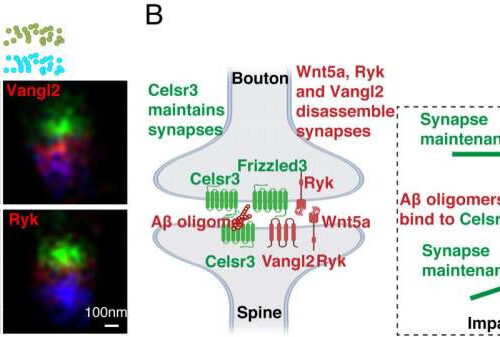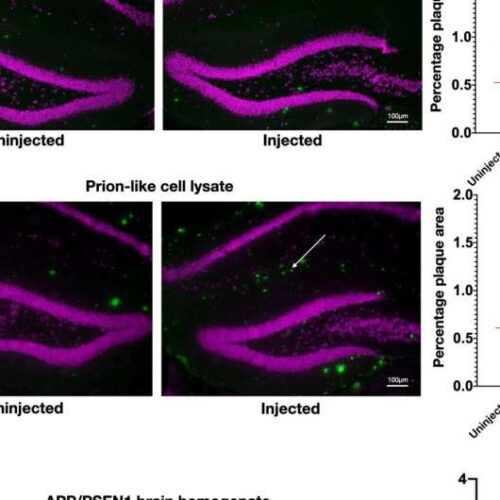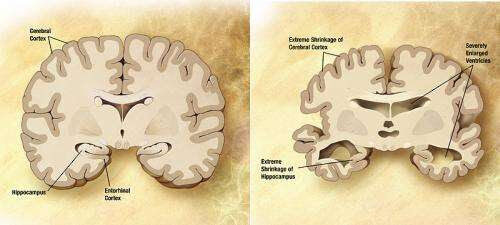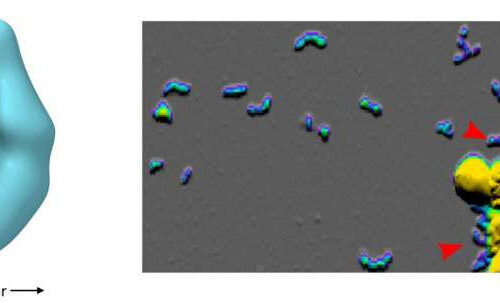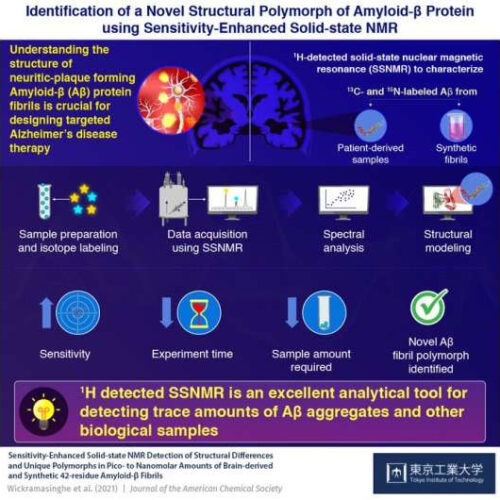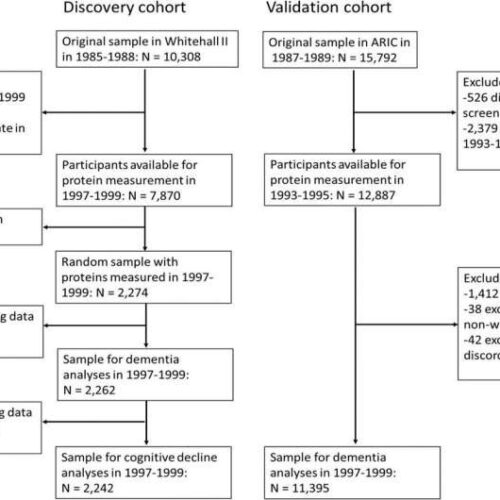by University of California – San Diego A. Localization of Wnt/PCP pathway signaling components in glutamatergic synapses in adult hippocampus detected by super-resolution microscopy. B. Schematic diagram showing the balance of Wnt/PCP signaling in synapse maintenance and the binding site of oligomeric amyloid beta. Credit: Feng et al., Sci. Adv. 2021 Healthy adult brains are endowed with...
Category: <span>Alzheimer’s</span>
A genome-editing strategy for potential Alzheimer’s disease therapy
by Hong Kong University of Science and Technology The level of amyloid (white shades in area encircled by green dotted lines) – the protein thought to drive neurodegeneration in AD, is high in the brain of AD mouse (left) and reduces after the administration of the genome editing therapy throughout the brain (right). Credit: HKUST An...
Alzheimer’s disease may start inside nerve cells
by Lund University Prion-like cell lysate seeds plaques in vivo. a Timeline of unilateral injections into hippocampus of 7-week-old 5xFAD mice, followed by labeling at 23 weeks with MOAB2 (Aβ, green) and NeuN (neuronal cell bodies, magenta). b Unilateral injection in hippocampus of 5xFAD transgenic mouse with lysate of APPSwe N2a cells. Plaque quantification of the upper...
No Net Benefit of Aducanumab for Alzheimer’s Disease, Expert Panel Rules
Kerry Dooley Young July 16, 2021 An influential, independent panel unanimously voted that aducanumab (Aduhelm) offers no benefit for patients with Alzheimer’s disease (AD), adding to growing opposition from medical experts to the US Food and Drug Administration’s (FDA’s) approval of this controversial drug. The Institute for Clinical and Economic Review (ICER) asked one of its expert panels, the California Technology Assessment Forum,...
Do some diabetes drugs reduce the risk of Alzheimer’s?
by American Academy of Neurology Diagram of the brain of a person with Alzheimer’s Disease. Credit: Wikipedia/public domain. People taking certain drugs to lower blood sugar for type 2 diabetes had less amyloid in the brain, a biomarker of Alzheimer’s disease, when compared to both people with type 2 diabetes not taking the drugs and people...
New insights into the formation of toxic protein clumps in Alzheimer’s disease
by Forschungszentrum Juelich Small Aβ oligomers (left: cryo-electron microscopy) are clumps consisting of just a few Aβ molecules. They cluster together to form short, worm-like structures known as protofibrils (right: atomic force microscopy). In an acidic environment, the Aβ oligomers form very quickly and cluster to form large particles from which protofibrils are separated following neutralization...
Novel Alzheimer’s disease amyloid β polymorph revealed
by Tokyo Institute of Technology Sensitivity-enhanced solid-state NMR spectroscopy can be used in the structural characterization of amyloid β—the pathogenic protein involved in Alzheimer’s disease—as shown by scientists from Tokyo Tech. Their findings bring to light a novel polymorph of the protein and associated structural elements that can be targeted for disruption towards the development of...
Fine particulate air pollution associated with higher risk of dementia
by University of Washington Ten-year average PM2.5 exposure predictions based on 2000–2009 data and smoothed to broadly represent pollution differences in the Puget Sound region. Shaded circles indicate study participant addresses. Credit: Magali Blanco/University of Washington Using data from two large, long-running study projects in the Puget Sound region—one that began in the late 1970s measuring...
Study: 15 novel biomarkers for diseases predisposing to dementia discovered
by University of Helsinki Flowchart of sample selection in discovery and validation cohorts. ARIC, the Atherosclerosis Risk in Communities study. Credit: DOI: 10.1002/alz.12419 A study by an international research group identified 15 novel biomarkers that are linked to late-onset dementias. These biomarkers are proteins, which predict cognitive decline and subsequent increased risk of dementia already 20...
UC study: Researchers question prevailing Alzheimer’s theory with new discovery
Scientists at UC say restoring a brain protein, not removing amyloid plaques, should be the target Experts estimate more than 6 million Americans are living with Alzheimer’s dementia. But a recent study, led by the University of Cincinnati, sheds new light on the disease and a highly debated new drug therapy. Image credit: Pixabay (Free Pixabay...

